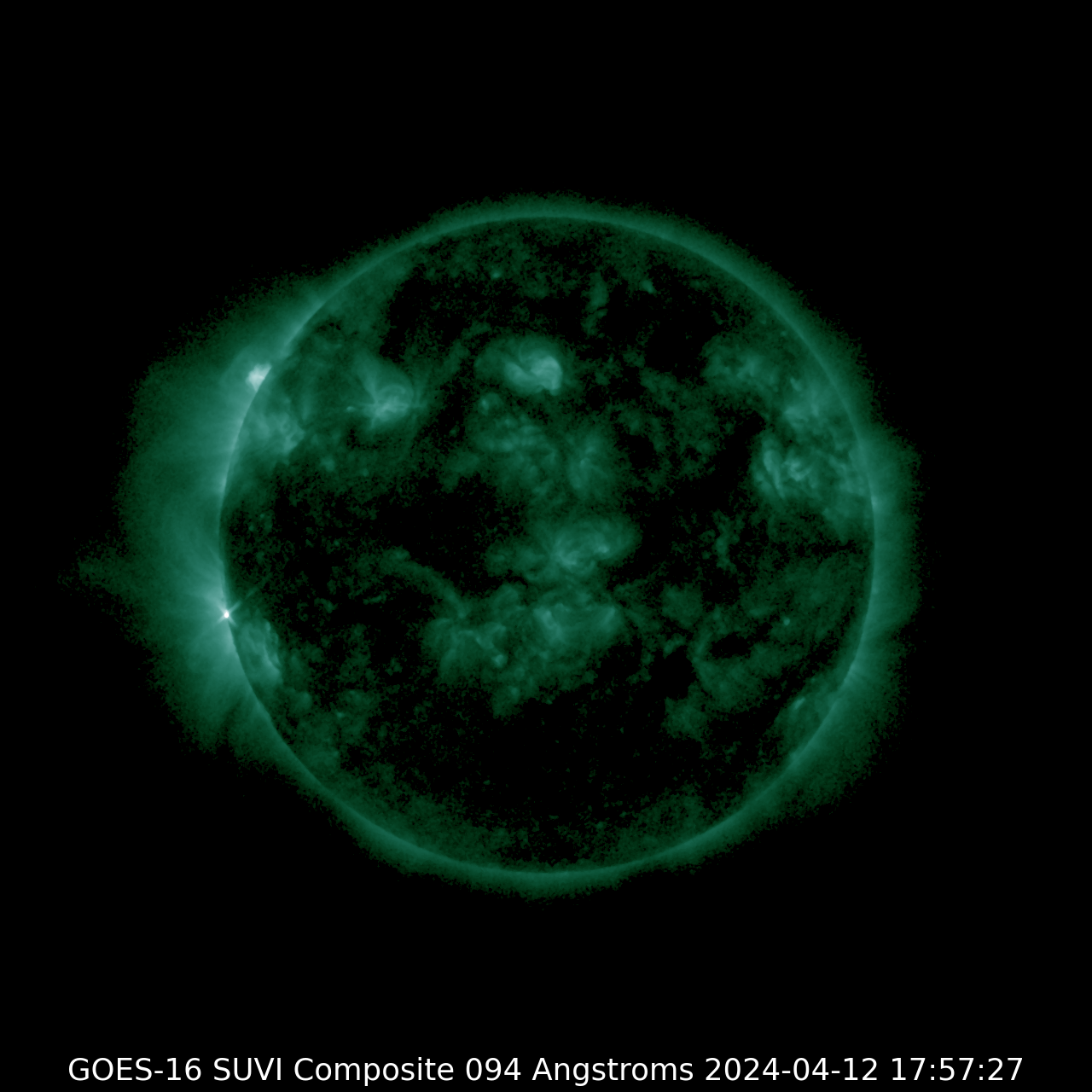
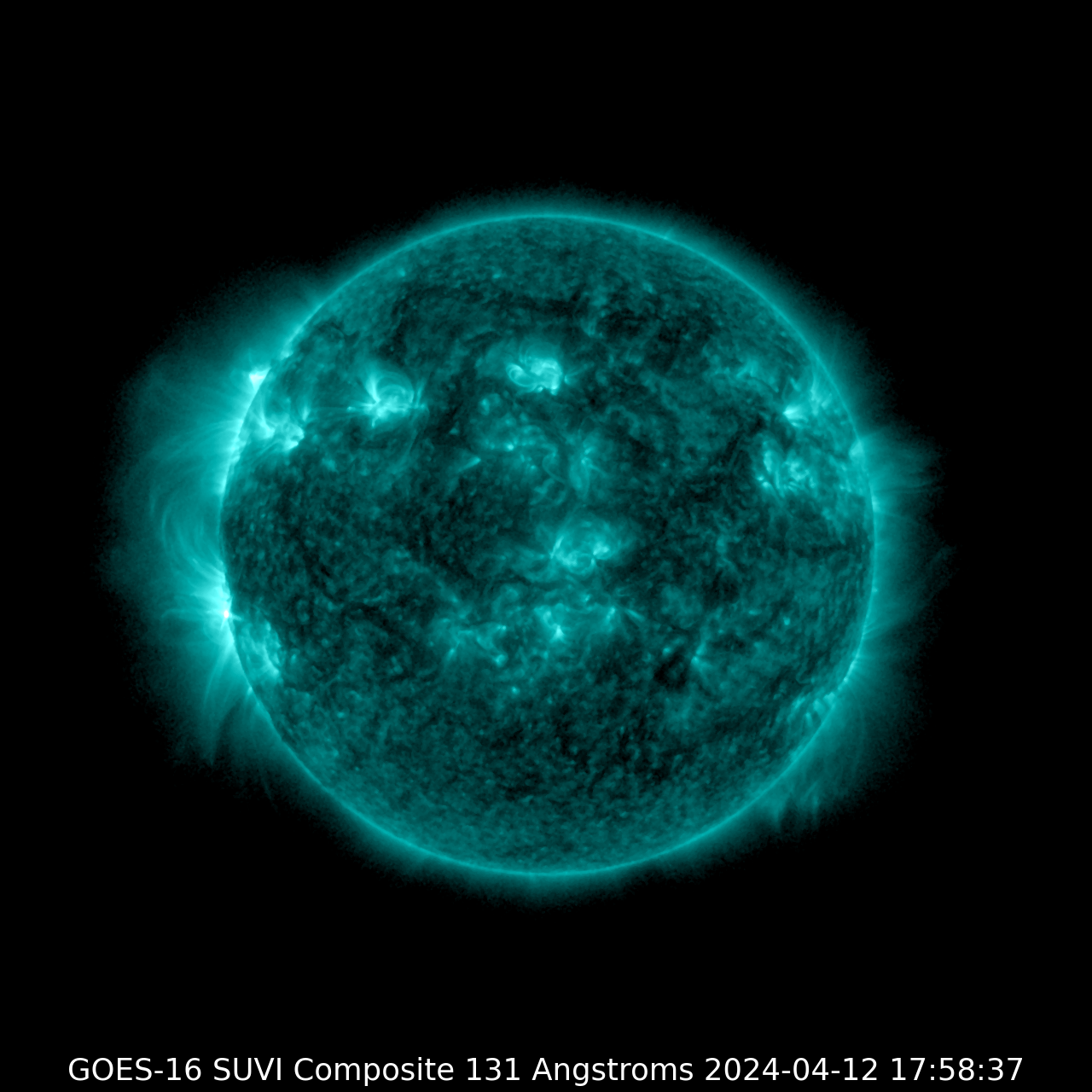
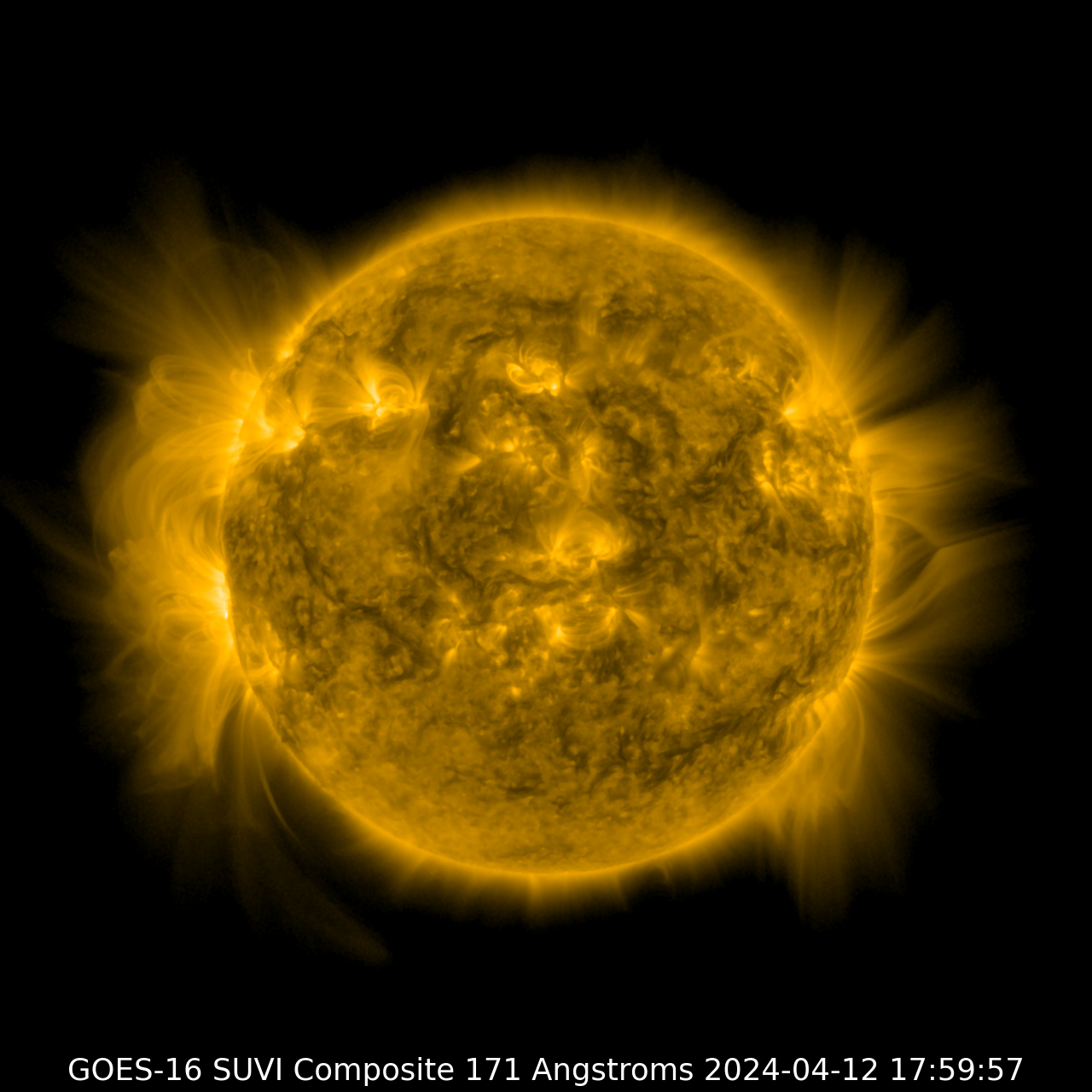
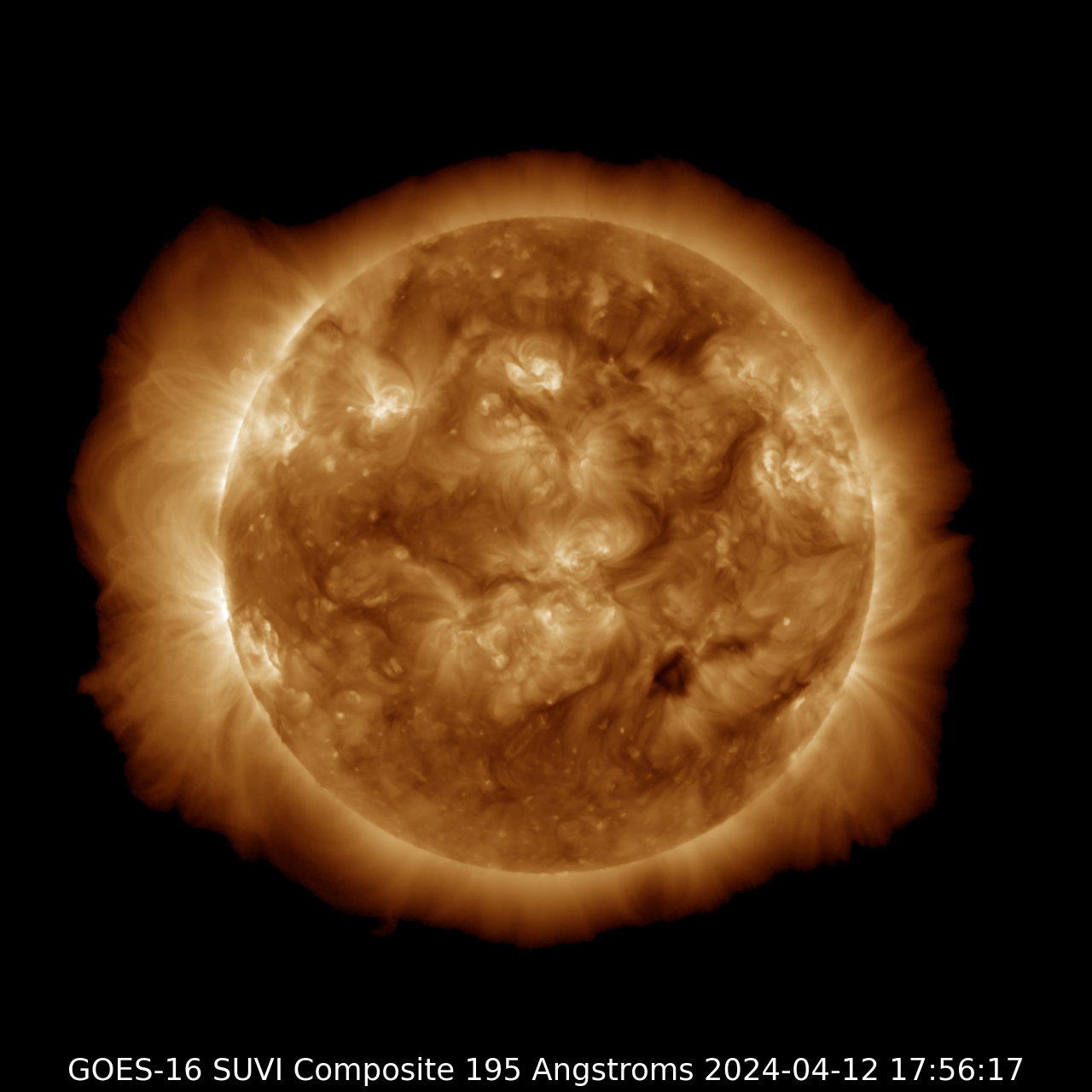
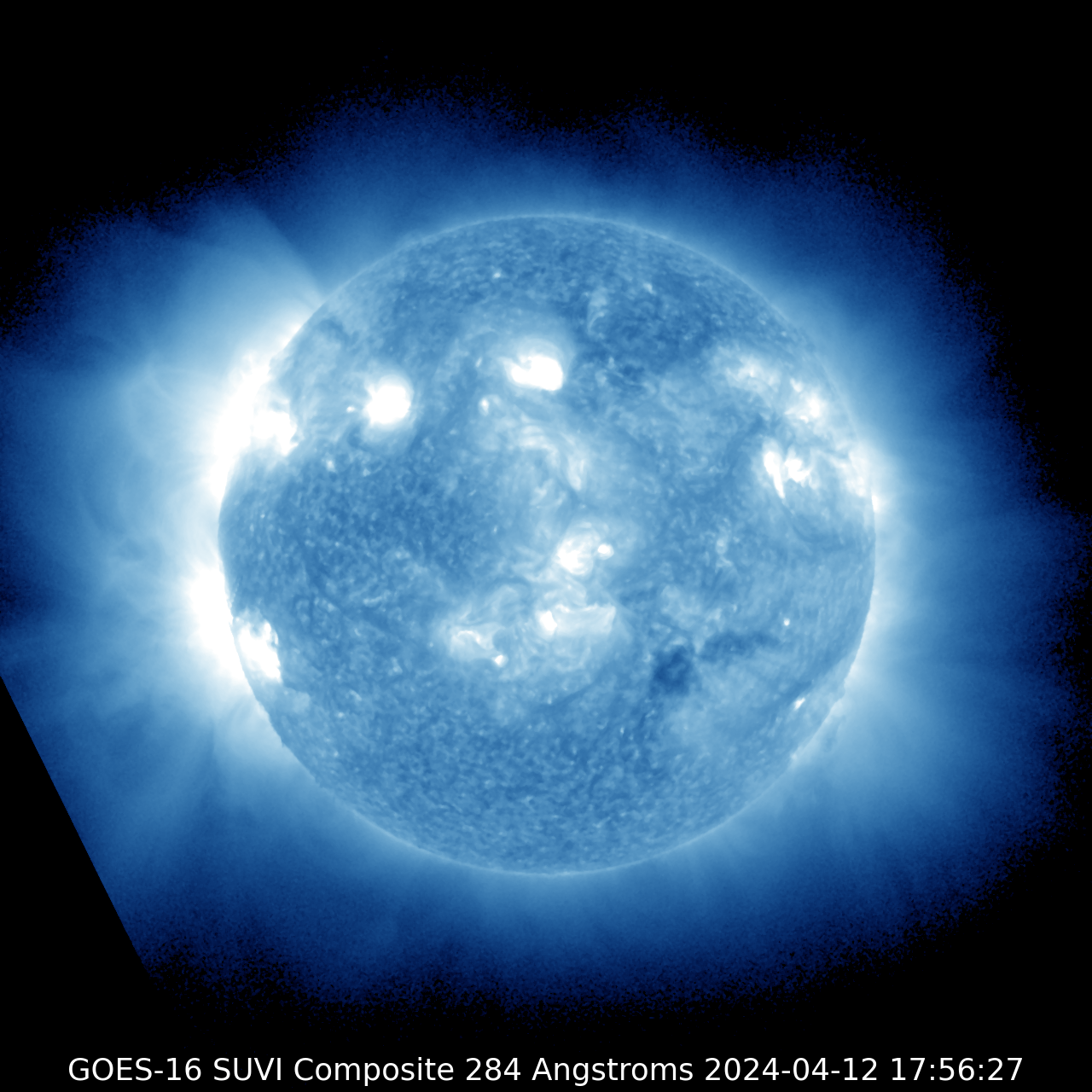
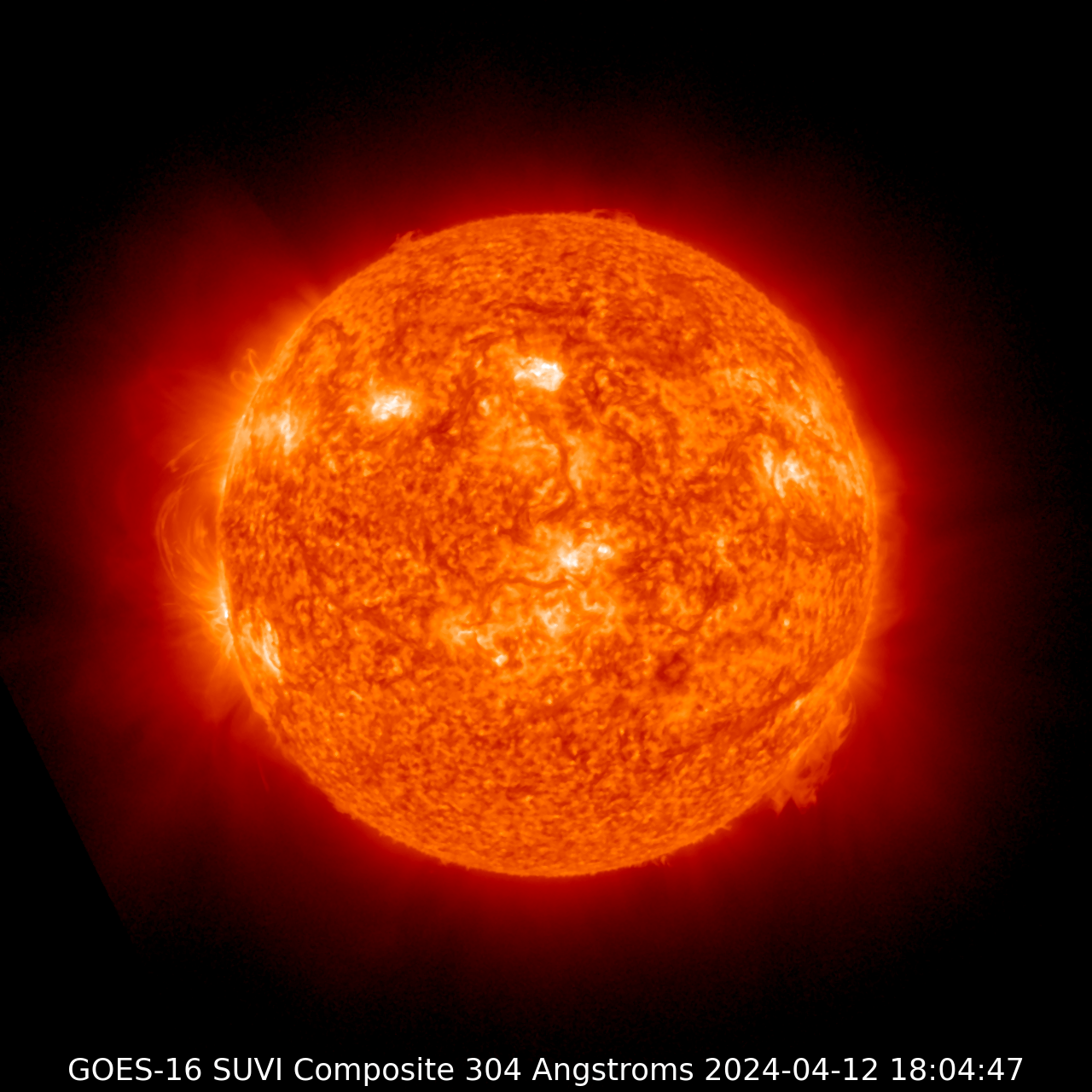
Use the slider above to see the sun in different wavelengths of light. What different features of the sun can you spot? Read on to learn more about these images, captured by the Solar Ultraviolet Imager (SUVI), and what they reveal about the sun.
When you move the slider back and forth in the activity above, you’re seeing the sun – up close – in different wavelengths! Light travels in waves, and the distance between the peaks of a wave is called the wavelength. The different colors you see in this slider activity aren’t actually color photos of the sun, but they do represent different wavelengths of light and different temperatures.
These images of the sun were captured by the Solar Ultraviolet Imager (SUVI) aboard the weather satellite GOES-16 (GOES is short for Geostationary Operational Environmental Satellite). SUVI is a telescope that monitors the sun in the extreme ultraviolet (EUV) wavelength range. EUV images have to be taken from space, as Earth’s atmosphere absorbs these wavelengths. (That is, you can’t see these wavelengths from the ground.)
SUVI is able to see solar flares and large solar eruptions, called coronal mass ejections (also known as CMEs). With these pictures, scientists can help provide early warnings of possible impacts and disruptions that space weather events can have on Earth.
What Types of Solar Activity Do These Images Reveal?
Wavelengths are measured in tiny units called angstroms. One angstrom is equal to one hundred-millionth of a centimeter. There are six main wavelengths that are used for space weather forecasting: 94, 131, 171, 195, 284 and 304 angstroms. Different wavelengths can reveal different features of the sun.

GOES-16 SUVI Image: 94 Angstroms
- Temperature: ~10.8 million degrees F
- Wavelength of light: 94 angstroms
- Sun feature monitored: Solar flares

GOES-16 SUVI Image: 131 Angstroms
- Temperature: ~18 million degrees F
- Wavelength of light: 131 angstroms
- Sun features monitored: Solar flares, active regions

GOES-16 SUVI Image: 171 Angstroms
- Temperature: ~1.8 million degrees F
- Wavelength of light: 171 angstroms
- Sun features monitored: Quiet regions, active regions, coronal mass ejections

GOES-16 SUVI Image: 195 Angstroms
- Temperature: ~2.25 million degrees F
- Wavelength of light: 195 angstroms
- Sun features monitored: Quiet regions, active regions, coronal mass ejections

GOES-16 SUVI Image: 284 Angstroms
- Temperature: ~3.6 million degrees F
- Wavelength of light: 284 angstroms
- Sun feature monitored: active regions

GOES-16 SUVI Image: 304 Angstroms
- Temperature: 90,000 degrees F
- Wavelength of light: 304 angstroms
- Sun features monitored: Filaments, quiet regions of the sun, coronal mass ejections
Monitoring Space Weather Around the Clock
The SUVI telescopes are located on the GOES 16, 17 and 18 weather satellites – and the soon to launch GOES-U weather satellite. These satellites are in geosynchronous orbits that allow nearly continuous solar viewing, every hour of the day, every day of the week.
SUVI can see solar flares and eruptions, and watch active regions evolve. These help forecasters deliver early warnings, watches, and forecasts up to 15 hours before the effects of the solar storm arrive at Earth.
More Solar Monitoring Instruments
In addition to SUVI, the upcoming GOES-U satellite will have another space weather instrument, the Naval Research Laboratory’s Compact Coronagraph-1 (CCOR-1).
The CCOR-1 will image the solar corona and see coronal mass ejections as they move away from the sun.




